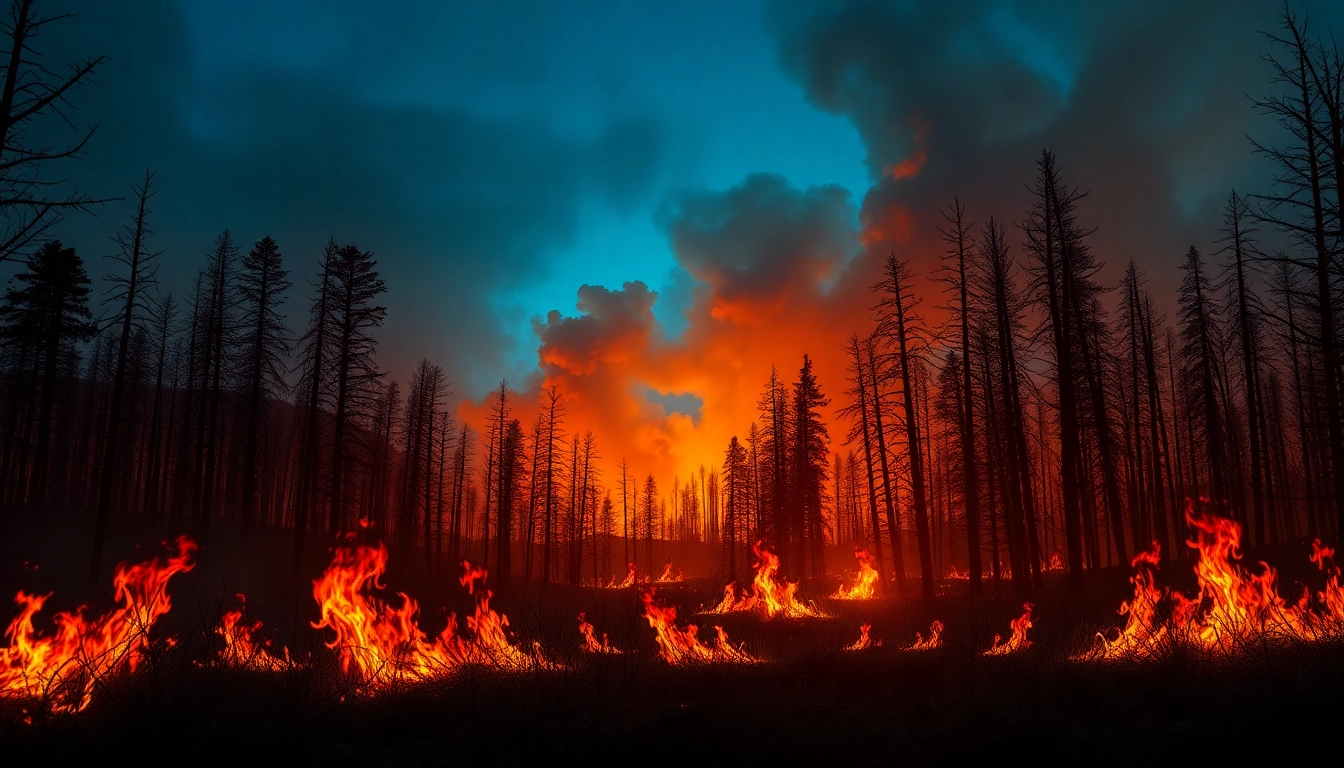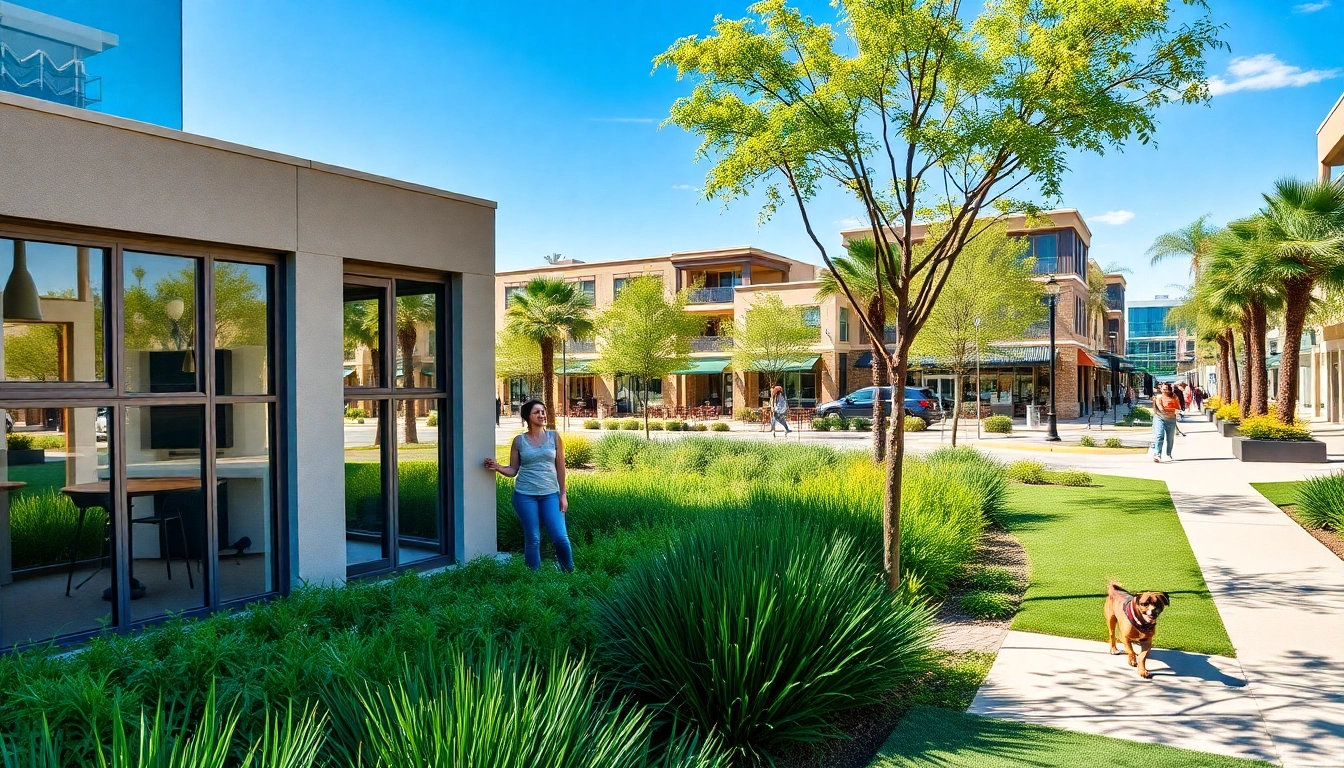Introduction to Wildfire Events
Definition and Overview of Wildfire Events
Wildfire events refer to uncontrolled fires that spread rapidly through vegetation, leading to significant ecological, economic, and societal impacts. These events can vary significantly in scale, duration, and damage, affecting natural landscapes, wildlife, and communities. A wildfire is typically characterized by its ability to burn through forests, grasslands, and brush, igniting at a pace that can often outmatch firefighting efforts. With wildfire events occurring globally, understanding their dynamics is essential for developing effective management strategies and response protocols.
Historical Context: The Evolution of Wildfire Events
Historically, wildfire events have shaped ecosystems and influenced human settlement patterns. Indigenous cultures recognized the role of fire in maintaining landscapes, using controlled burns to promote game habitats and prevent larger wildfires. However, the perception of wildfires shifted with the advent of modern forestry management practices in the 20th century, which prioritized fire suppression over ecological balance. This shift eventually led to an accumulation of fuel in forests, increasing the intensity and frequency of today’s wildfire events.
Current Trends and Statistics of Wildfire Events
Recent statistics indicate a worrying trend: wildfire events are increasing in both frequency and severity. The National Interagency Fire Center reports that millions of acres are burned annually in the United States alone, with a notable rise during the summer months. The combination of prolonged drought conditions, increased human encroachment into fire-prone areas, and climate change has contributed to this escalation, prompting calls for improved forest management and fire readiness measures.
Causes of Wildfire Events
Natural Causes: Lightning and Environmental Factors
The primary natural cause of wildfire events is lightning strikes, which ignite combustible materials under appropriate conditions. Aside from lightning, environmental factors such as high temperatures, low humidity, and strong winds exacerbate the likelihood of fires. Regions experiencing prolonged drought conditions are particularly vulnerable, as the moisture levels in vegetation drop, making it easier for fires to ignite and spread.
Human-Induced Causes of Wildfire Events
Human activities are responsible for a significant portion of wildfire events. These actions include campfires left unattended, discarded cigarettes, and intentional arson. The increasing development of urban areas adjacent to wildlands, known as the wildland-urban interface, also heightens the risk of wildfire events as more people inhabit fire-prone regions, often without adequate fire safety practices in place.
The Role of Climate Change in Wildfire Events
Climate change plays a substantial role in the increasing incidence and intensity of wildfire events. Rising temperatures lead to prolonged dry seasons, while changes in precipitation patterns contribute to a higher chance of drought. These climatic shifts not only increase the likelihood of wildfires igniting but also extend the fire season, meaning that the window for firefighting efforts becomes shorter. The correlation between climate change and wildfire events necessitates a comprehensive understanding of environmental science to develop effective mitigation strategies.
Impacts of Wildfire Events
Environmental Consequences of Wildfire Events
Wildfire events have profound environmental impacts. They trigger the loss of biodiversity, destroy wildlife habitats, and alter landscapes permanently. Furthermore, the aftermath of wildfires often leads to soil erosion, water quality degradation, and increased susceptibility to invasive species. The release of greenhouse gases during these events also contributes to ongoing climate change, creating a cycle that perpetuates further wildfires.
Economic Costs Associated with Wildfire Events
The economic fallout from wildfire events is significant. Governments and agencies allocate vast resources for firefighting efforts and post-fire recovery. Additionally, the destruction of homes, businesses, and infrastructure results in massive costs for communities. In many instances, these expenses are exacerbated by increased insurance premiums and lost revenue from tourism in affected areas. As the frequency of wildfire events rises, these economic impacts are expected to grow, prompting the need for enhanced planning and prevention strategies.
Health Risks and Safety Measures During Wildfire Events
The health implications of wildfire events extend beyond immediate dangers such as fire and smoke inhalation. Research shows that prolonged exposure to wildfire smoke can lead to respiratory issues, cardiovascular problems, and other health risks, especially among vulnerable populations. As such, communities must implement safety measures, including evacuation plans and real-time communication about air quality, to protect public health during wildfire events.
Preparedness for Wildfire Events
Personal and Community Preparedness Strategies
Preparedness is crucial in mitigating the risks associated with wildfire events. Individuals should create defensible space around their homes by clearing flammable vegetation and using fire-resistant building materials. Communities can develop wildfire preparedness programs that educate residents about evacuation routes, emergency kits, and communication strategies with local authorities.
Developing Effective Response Plans to Wildfire Events
Effective response plans must include coordinated efforts among various agencies, encompassing fire departments, emergency services, and community organizations. Plans should outline roles and responsibilities, resource allocation, and communication structures to ensure a timely response to wildfire events. Furthermore, regular drills and training sessions can prepare both responders and citizens for efficient action during an emergency.
Resources and Tools for Wildfire Events Preparedness
A variety of resources are available for individuals and communities to enhance their wildfire preparedness. Tools such as official wildfire risk assessment websites, mobile apps offering real-time updates, and government-sponsored educational materials can assist in developing comprehensive preparedness strategies. Local fire departments often provide workshops focusing on fire prevention tactics and response techniques, fostering a culture of awareness and readiness.
Future Outlook on Wildfire Events
Predicting Changes in Frequency and Severity of Wildfire Events
The outlook for wildfire events remains concerning, with predictions indicating that climate change will continue to intensify these occurrences. As temperatures rise and precipitation patterns shift, the traditional fire seasons may lengthen, leading to a higher likelihood of catastrophic wildfires. Advances in remote sensing technologies and predictive modeling may provide valuable data to inform resource allocation and community preparedness.
Innovations in Firefighting and Prevention Techniques
Innovative firefighting techniques and prevention measures are evolving to address the challenges posed by wildfire events. Drones and satellite technology are being used to monitor fire spread and assess damage, while controlled burns are being employed to reduce fuel loads in at-risk areas. Moreover, investments in wildfire research are yielding new strategies focusing on ecosystems management and community resilience.
Advocacy for Policy Changes Regarding Wildfire Events
Advocacy for policy changes is vital to addressing the growing challenges posed by wildfire events. This includes pushing for stricter building codes in fire-prone areas, investing in infrastructure improvements, and promoting conservation efforts aimed at restoration of natural landscapes. Collaborative efforts among government agencies, NGOs, and the public can foster a proactive approach that emphasizes sustainable practices and mitigates the impacts of future wildfire events.



